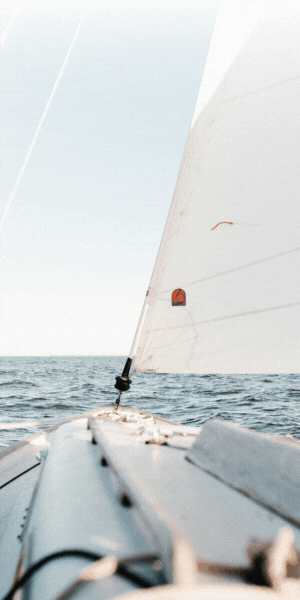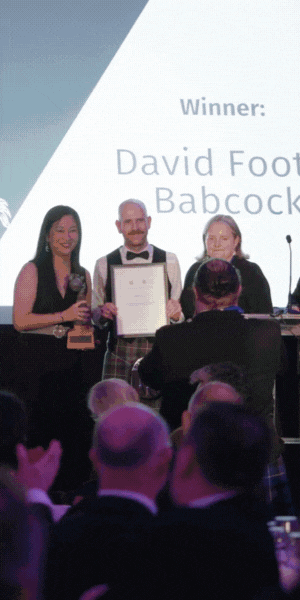(For the full, in-depth article, see Ship & Boat International May/June 2021)
Norwegian naval architect ESNA’s incorporation of surface effect ship (SES) design into offshore operations resulted in the Q1 launch of the hybrid-powered CWind Pioneer (pictured) – and future moves into hydrogen power are planned, writes Alan Bliault, FRINA.
ESNA’s founders set out to utilise special characteristics of this vessel concept for improved logistical operations at offshore wind farms and oil and gas installations. They started with the design of the 15m Sea Puffin 1, an in-field shuttle/daughter craft for offshore wind farms, which was launched in 2018.
Building on the learnings gained from Sea Puffin 1, the larger CWind Pioneer is a game-changer for the industry because of its ability to handle a 2m significant wave height during technician transfers. This design has a hybrid diesel-electric arrangement: transits between port and the wind farm are conducted under diesel power, while in-harbour manoeuvres and loitering on stand-by are powered by batteries alone. This facilitates a reduction in diesel engine hours and optimises diesel engine efficiency, helping to minimise CO2 emissions during the working day. The main engines can also be declutched from the waterjets and used to charge the batteries.
The twin catamaran hulls are built in marine-grade aluminium, and the superstructure is manufactured in composites. The cushion is bounded by deep segments at the bow and a multi lobe bag skirt at the stern. Forward-mounted centrifugal fans feed the air cushion, supporting approximately 80% of the vessel weight. The remaining 20% is supported by hull buoyancy. As with Sea Puffin 1, a cushion air control system minimises motions and accelerations for both transits and turbine-boarding operations.
With this project having been carried out during 2020’s pandemic, special attention was paid to personal safety for the passengers, and Plexiglas divisions have been incorporated all around the seats.
Significant fuel savings could be achieved through minimising inefficient low engine power running hours, with battery drive modes including wind farm stand-by and low-speed/harbour operations. This will lead to an engine operating hour reduction of 50% during wind farm battery stand-by. A possible next step will be to move to all-electric power – either through pure battery power or a combination of batteries and fuel cells. The challenge with this approach is primarily the storage of hydrogen as liquid H2 instead of as compressed gas. At present, regulations do not allow H2 storage within a hull, so the right storage place must be found above deck. Then, one is left with the challenges associated with heavy high-pressure vessels or insulated tanks. H2 is rather light, even in liquid form, so the mass of the tank located above deck is the main design issue.
Additionally, to be truly ‘zero-emission’, one really needs H2 produced by electrolysis for vessels such as ESNA’s proposed ZES SES CTV. Some wind farm operators, including Ørsted and Equinor, are now working on this aspect with pilot projects for H2 production.
TECHNICAL PARTICULARS
CWind Pioneer
| Length, oa | 22m |
| Breadth | 8.9m |
| Draught | 1.9m (off cushion) / 0.5m (on cushion) |
| Deck space | 30m2 (forward) |
| Max deck cargo | 7tonnes |
| Main engines | 2 x Scania DI 16 076M |
| Output of each engine | 809kW |
| Waterjets | 2 x RR Kamewa S50-3/CA |
| Gearbox | ZF |
| Electric generator/motors | 2 x 130kW |
| Electric power bank | 87kWh usable energy |
| Centrifugal lift fan | 1 x 240kW |
| Service speed | 27-38knots (dependent on sea state) |
| Max speed | 43+knots |
| Crew | 3 |
| Offshore technicians | 24 |
| Classification society | Bureau Veritas |
| Notations | ✠ HULL ● MACH Wind Farms Service Ship – S0, Sea area 2 (2.5m Hs) Electric Hybrid (PM, ZE) MCA HS-OSC, Cat 1 |






